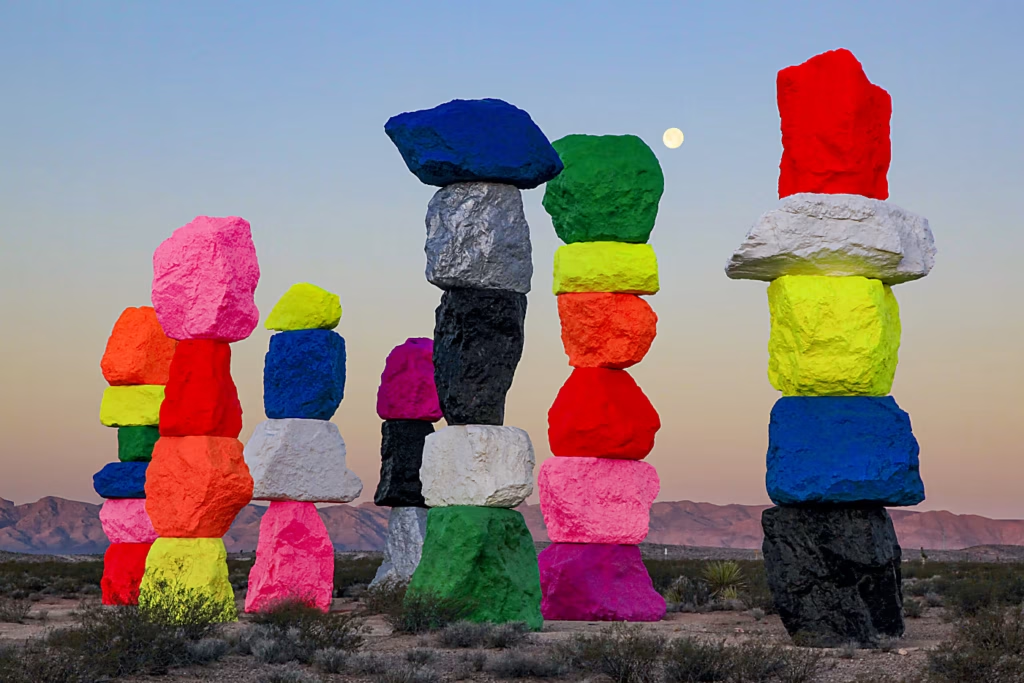Artists Explore New Ways of Sculpting the Land WSJ Review
New exhibitions at the Nevada Museum of Art spotlight the state’s central role in the evolving land art movement
By Susan Delson
July 23, 2021 2:00 pm ET
A photograph by Gianfranco Gorgoni of ‘Seven Magic Mountains’ by Ugo Rondinone, a 2016 land art work near Las Vegas. Photo: Photograph © Estate of Gianfranco Gorgoni; Artwork © Ugo Rondinone
In 1969, a young artist named Michael Heizer headed into the Nevada desert 80 miles northeast of Las Vegas and cut a pair of trenches into a mesa, running 50 feet deep, 30 feet wide and a combined 1,500 feet long. Monumental enough to be seen in satellite photographs, “Double Negative” quickly became an icon in the emerging field of land art—art that uses land itself as its material, by marking, sculpting or otherwise intervening in the landscape.
Half a century on, land art is changing. For one thing, it’s no longer the exclusive domain of male artists from New York, “talking tough and driving bulldozers” to make “geometric, minimalist gestures in the desert,” said William Fox, director of the Center for Art + Environment at the Nevada Museum of Art in Reno. Contemporary artists tend to favor less intrusive approaches, Mr. Fox said, often addressing what he called “real-world, real-time concerns.” And they’re more likely to be women and people of color, including indigenous artists.


